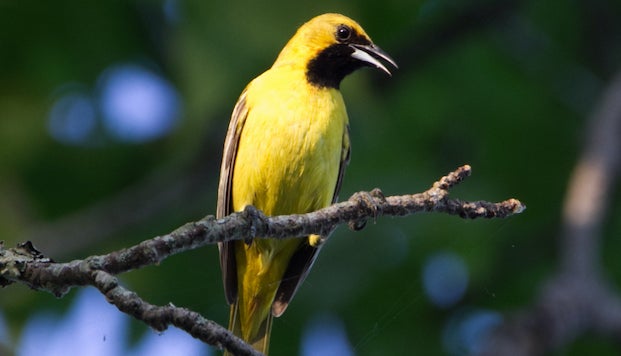Orchard Orioles coexist with their more well-known variety
Published 6:46 pm Wednesday, June 2, 2021

- (Steve Taylor/ For the Daily News)
|
Getting your Trinity Audio player ready...
|
Orchard Orioles keep popping up on my excursions. The first time I ever observed one was at the cottage of Earl and Ruth Trevathan in Bath. Their waterfront getaway was the kind with a not overly manicured yard, leaning pines, and hollow snags left to stand where woodpeckers could nest — a place with minimal bulkheading and maximum wildlife. Seeing the oriole, Dr. Trevathan said, there is always an Orchard Oriole in a pecan tree, especially near water.
Eight or so Baltimore Orioles-showy orange and black birds-had wintered in my neighborhood for almost five months, arriving on the first of December with the first cold front, and remaining through April. On April 25, I heard a new song throughout the day coming from high up in various trees. I took a look and soon found a mature male Orchard Oriole with its characteristic coloration of black and rich chestnut red-brown.
The Orchard Oriole would hang out with the Baltimore Orioles in their “evening tree” before heading to their overnight roost in the dense top of a cedar tree. I found it intriguing that the Orchard and the Baltimores would congregate. Looking at the All About Birds website, I learned that this is typical behavior. The birds may share warnings about predators, for example.
I noticed my new Orchard Oriole and the Baltimores flying after each other into the mulberry tree next door. Were the Baltimores showing their food source? In late April those mulberries were green, hardly ripe.
A couple of days later, the Baltimores left on their migration north. The Orchard Oriole is gone as well, but may have nested somewhere local. I don’t know what to make of their brief overlap and interactions, but I enjoyed watching these colorful and vocal birds, and I will surely be on the lookout to see them at the same time next year.
The immature male Orchard Oriole that sings in Oakdale Cemetery (see May 22 column) is still there. I saw two more this past week, one at Crisp Landing on Blount’s Creek (a public boat ramp) and another at Cotton Patch Landing less than a half-mile away, which is the subject of the picture showing the chartreuse yellow-green coloration of the male after its first year. Next year this individual will be in chestnut and black plumage.
The Orchard Oriole is a brief migrant in our area — having arrived in late April, it will depart here by late July to winter in Central America and Colombia. While here, the orioles will weave their hanging nests of long blades of grass, and forage for insects, berries, and flower nectar.





